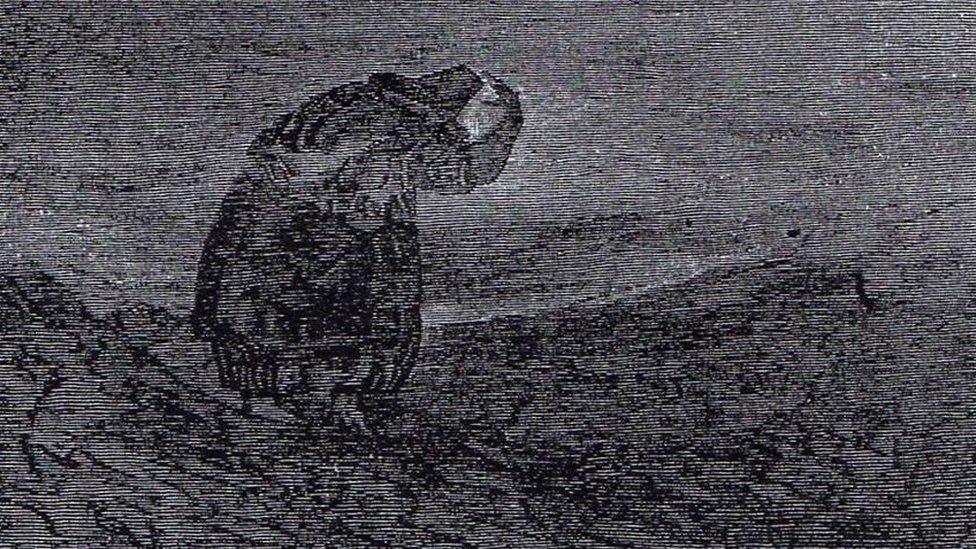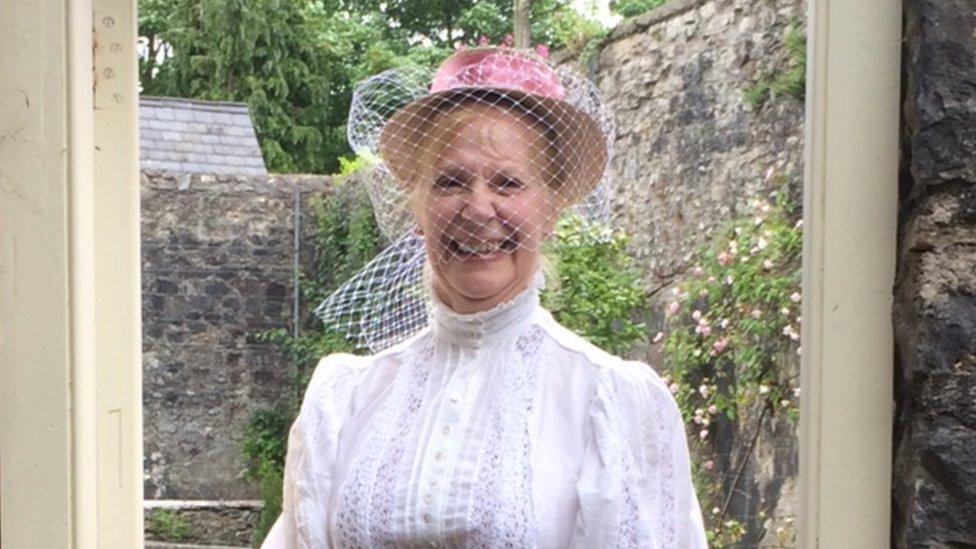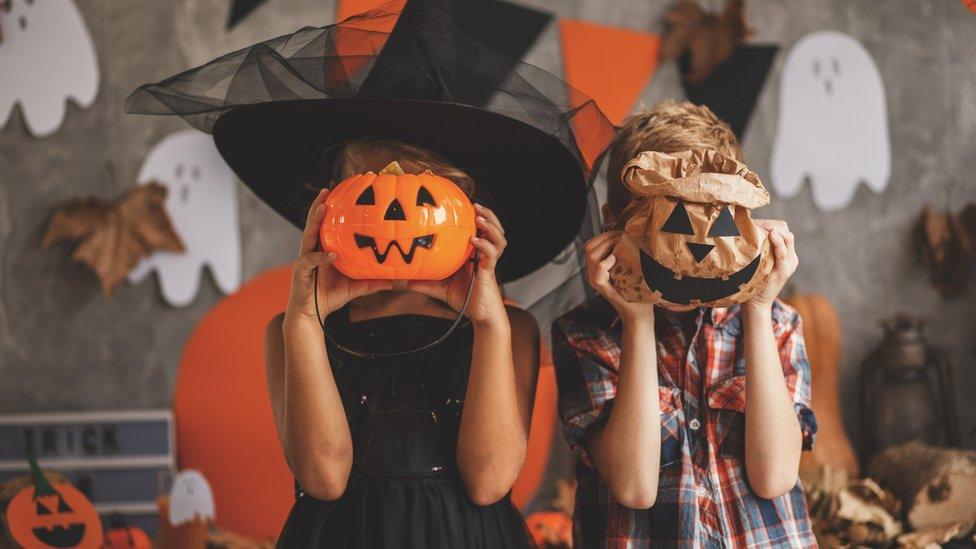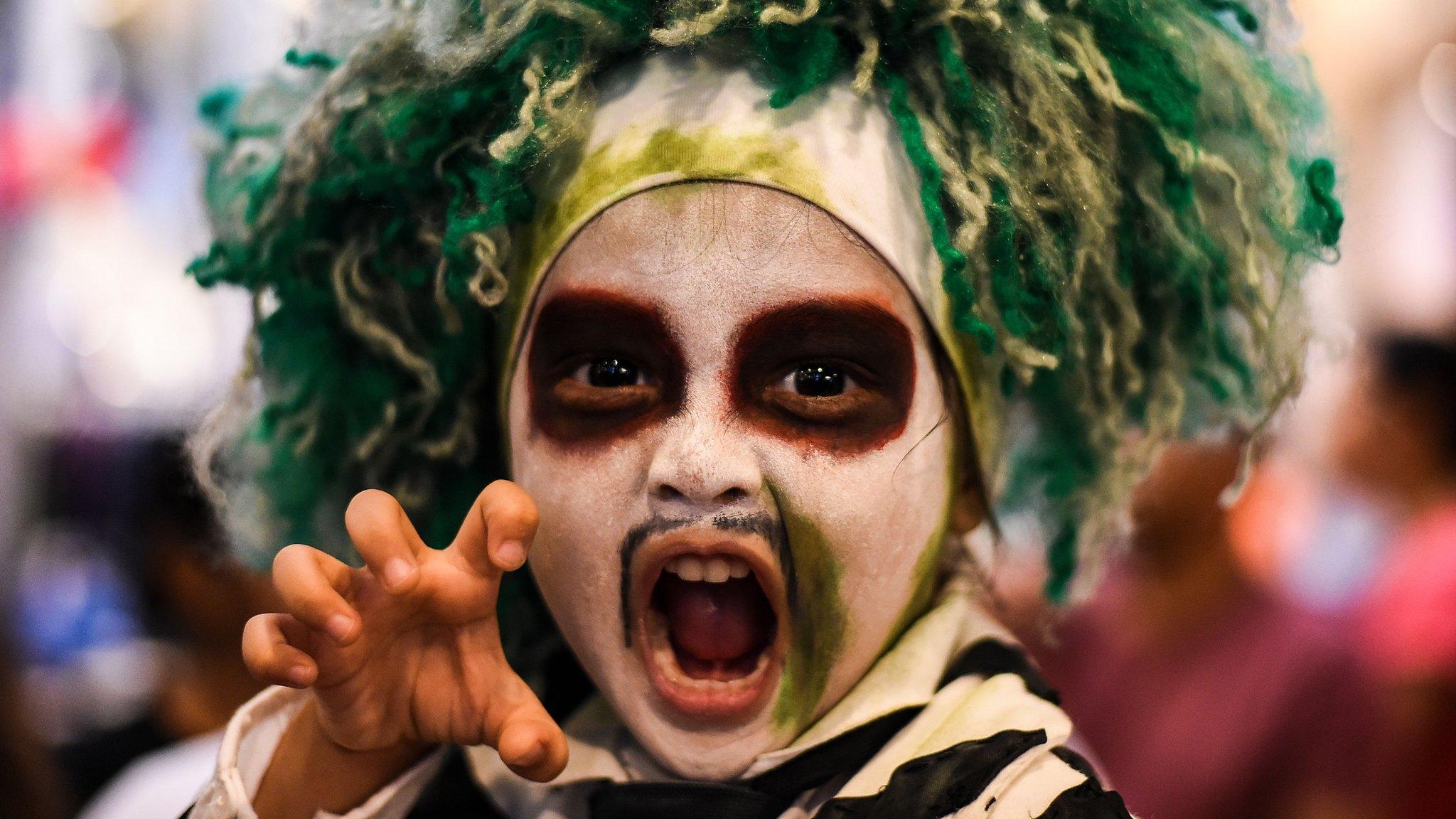Spooky Halloween traditions unique to Wales
- Published

An illustration depicting a Welsh witch, also known as a Gwrach
Unless you are a witch, pumpkin-seller or a six-year-old, not many people would say Halloween is their busiest time of the year.
Yet as Dr Juliette Wood hurriedly explained, between her umpteenth lecture of the week and a much-needed Pilates class, this week she's very in demand.
Dr Wood is Cardiff University's Celtic folklore expert, and has consulted on TV programmes including Tony Robinson's Gods and Monsters and Netflix's Myths & Monsters.
But she says none of her lectures draw more interest than the ones concerned with Halloween.
Despite being an expert in all things spooky and Welsh, her background is more unusual.
"In a former life I was a ballet dancer from New York City.

Dr Juliette Wood is Cardiff University's Celtic folklore expert
"My father's family was Welsh, and at college I became fascinated with everything to do with Wales, so in the 70s I came to Aberystwyth to learn the language.
"From there I did a post-doctoral degree at Oxford, met a lovely British man, and ended up in Cardiff teaching folklore."
While many Halloween traditions, such as trick or treating and its precursor of souling, can be found across most of the world, Dr Wood's 40 years of research have found that Wales does have its own unique rituals.

You might also like these:

In pre-Christian times, festivals celebrating the end of harvest and start of winter probably took place in Wales.
From the 9th Century onwards, this became bound up with the Christian festivals of All Saints and All Souls Day, after the Church moved these from spring to autumn.
"From that time we start to see the emergence of Calan Gaeaf in Wales, bringing together elements of harvest festivals with what we'd now call Halloween," Dr Wood explained.
"It would be a time to pay-off the seasonal workers on the farms, and bid farewell to the departed, both living and dead.
"The night would be celebrated with a feast of stwmp naw rhyw, a mash of nine different root vegetables with milk, butter, salt and pepper."
Dr Wood explained it was also a time for deciding which animals were fit enough to make it through the winter, and which ought to be slaughtered or sent to market before the cold set in.

The Welsh traditions seem very different to modern day Halloween
This gave rise to Hwch Ddu, or Black Sow, one of Calan Gaeaf's more bizarre and macabre rituals.
"At the end of the festival, one of the slaughtered pigs - usually a man covered in a cloth or animal skin - would rise up, supposedly out of the flames of the fire, and chase away the children.
"According to an associated rhyme, the pig would catch the last child to reach their home.
"It has its roots in beliefs about the souls of the dead, people and animals, but on a practical level it was probably just a fun and effective way of getting children to bed, and teaching them about the dangers of straying from the group."

More Halloween stories:

Other traditions particular to Calan Gaeaf include rituals about the future:
Each person at the festival would scratch their name onto a stone and cast it into the fire. If any stone was missing when the fire went out, the folklore deemed that person would die within the year
Single women would walk around the bounds of a church, chanting "here is the sheath where is the knife", to which they were said to hear the name of the person they were to marry
"Y Ladi Wen", the apparition of a white lady who could be found at crossroads and graveyards, guarding against other, darker, spirits

Celtic folklore expert Dr Juliette Wood's lectures on Halloween attract lots of attention
It all sounds far removed from modern day US Halloween, with its candy and Dawn of The Dead fancy dress costumes.
But Dr Wood believes that, with a foot either side of the Atlantic, she can see how the two aren't that different after all.
"For any festival to have survived as long as Halloween, it has to be dynamic and move with the times. In that respect you can see the zombies of today as serving precisely the same purpose of Hwch Ddu in Calan Gaeaf.
"It's a very human response to want to scare ourselves, but in a safe, controlled sort of way.
"But most Halloween traditions have little to do with death and spirits per se, they are concerned with bringing communities together.
"Whether it's the mass Halloween celebrations in New York following 9/11, or the stwmp naw rhyw mash served at Calan Gaeaf, the prevailing motivation is overcoming death and separation as one community."
- Published3 October 2023

- Published29 October 2018
